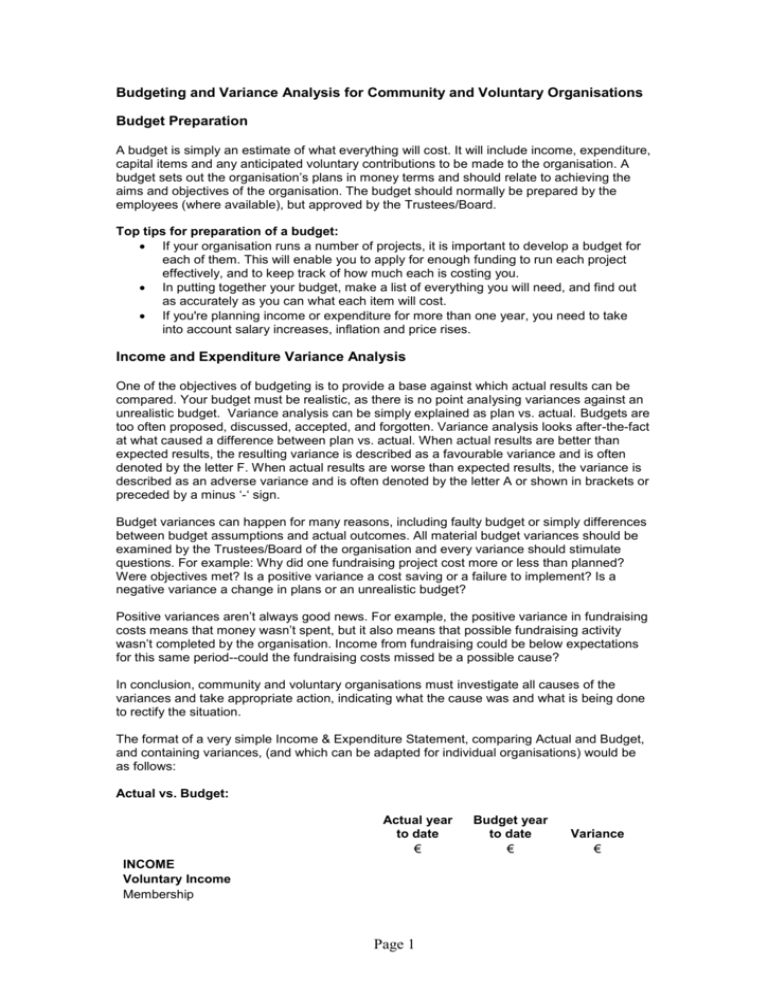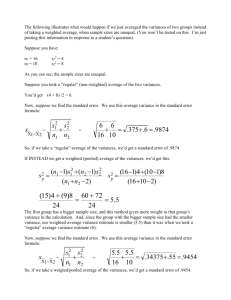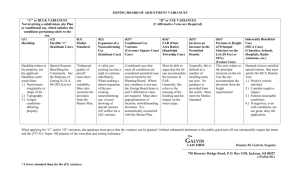Budgeting and Variance analysis for Charities
advertisement

Budgeting and Variance Analysis for Community and Voluntary Organisations Budget Preparation A budget is simply an estimate of what everything will cost. It will include income, expenditure, capital items and any anticipated voluntary contributions to be made to the organisation. A budget sets out the organisation’s plans in money terms and should relate to achieving the aims and objectives of the organisation. The budget should normally be prepared by the employees (where available), but approved by the Trustees/Board. Top tips for preparation of a budget: If your organisation runs a number of projects, it is important to develop a budget for each of them. This will enable you to apply for enough funding to run each project effectively, and to keep track of how much each is costing you. In putting together your budget, make a list of everything you will need, and find out as accurately as you can what each item will cost. If you're planning income or expenditure for more than one year, you need to take into account salary increases, inflation and price rises. Income and Expenditure Variance Analysis One of the objectives of budgeting is to provide a base against which actual results can be compared. Your budget must be realistic, as there is no point analysing variances against an unrealistic budget. Variance analysis can be simply explained as plan vs. actual. Budgets are too often proposed, discussed, accepted, and forgotten. Variance analysis looks after-the-fact at what caused a difference between plan vs. actual. When actual results are better than expected results, the resulting variance is described as a favourable variance and is often denoted by the letter F. When actual results are worse than expected results, the variance is described as an adverse variance and is often denoted by the letter A or shown in brackets or preceded by a minus ‘-‘ sign. Budget variances can happen for many reasons, including faulty budget or simply differences between budget assumptions and actual outcomes. All material budget variances should be examined by the Trustees/Board of the organisation and every variance should stimulate questions. For example: Why did one fundraising project cost more or less than planned? Were objectives met? Is a positive variance a cost saving or a failure to implement? Is a negative variance a change in plans or an unrealistic budget? Positive variances aren’t always good news. For example, the positive variance in fundraising costs means that money wasn’t spent, but it also means that possible fundraising activity wasn’t completed by the organisation. Income from fundraising could be below expectations for this same period--could the fundraising costs missed be a possible cause? In conclusion, community and voluntary organisations must investigate all causes of the variances and take appropriate action, indicating what the cause was and what is being done to rectify the situation. The format of a very simple Income & Expenditure Statement, comparing Actual and Budget, and containing variances, (and which can be adapted for individual organisations) would be as follows: Actual vs. Budget: Actual year to date € INCOME Voluntary Income Membership Page 1 Budget year to date € Variance € Donations Sponsorship & Fundraising Gifts in Kind Grant Income HSE Pobal CRAGA FÁS Other Grants Interest Investment Income Income from Ancillary Business Activity Total Income EXPENDITURE Operating Expenses Salaries (incl. PRSI) Pension Research & Advocacy Conferences Curriculum Development/Education Transportation Staff Expenses Volunteer Expenses Administration Telephone Postage Printing & Stationery Travel & Subsistence Transport Insurance (incl. Motor) Repairs & Maintenance Education & Training Fund Raising Costs Audit & Accountancy Other Professional Fees Bank Interest & Charges Depreciation IT & Systems Development Sundry Expenses Premises Rent Repair & Maintenance Energy Total Expenditure Surplus / (Deficit) Page 2









